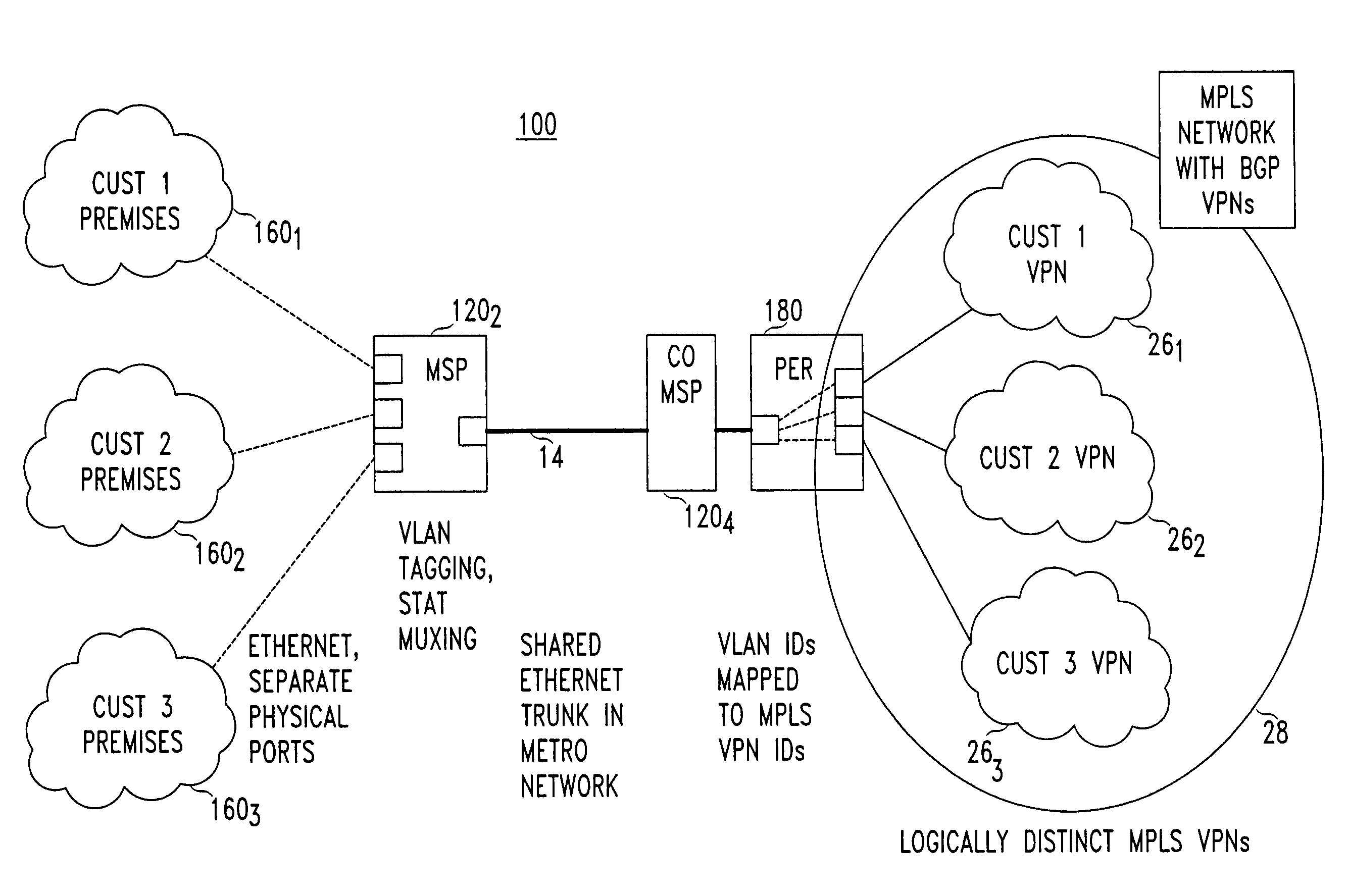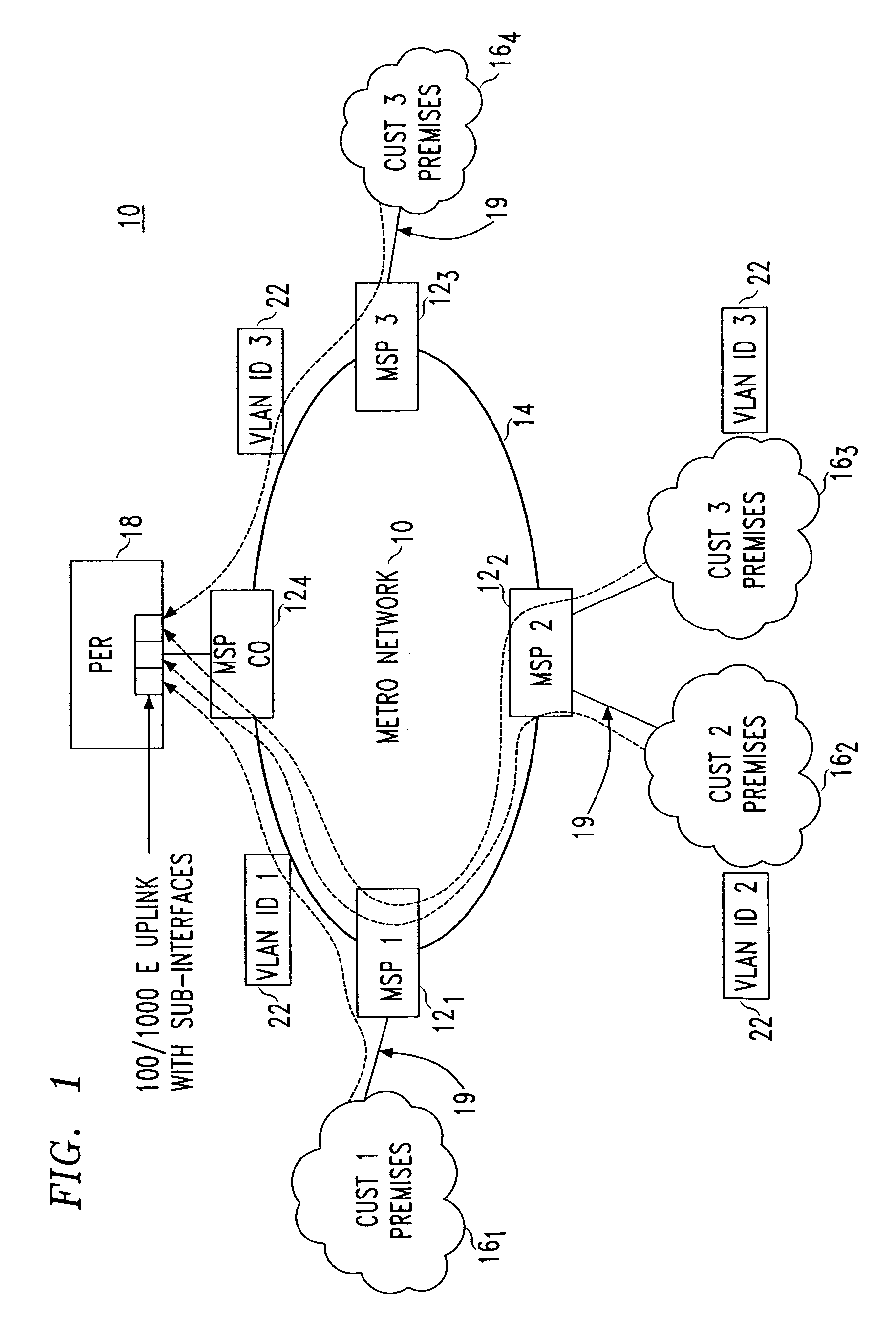Technique for ethernet access to packet-based services
a packet-based service and ethernet technology, applied in the direction of electrical equipment, digital transmission, data switching networks, etc., can solve the problems of preventing the network from regulating customer traffic, high cost of private line access, data security, etc., and achieve the effect of convenient and efficien
- Summary
- Abstract
- Description
- Claims
- Application Information
AI Technical Summary
Benefits of technology
Problems solved by technology
Method used
Image
Examples
Embodiment Construction
[0020]FIG. 1 depicts an Ethernet Protocol Metropolitan Area Network (MAN) 10 comprised of a plurality of Multi-Service Platforms (MSPs) 121-12n where n is an integer, each MSP taking the form of an Ethernet switch or the like. In the illustrated embodiment n=4, although the network 10 could include a smaller or larger number of MSPs. A fiber ring or SONET ring infrastructure 14 connects the platforms 121-124 in daisy-chain fashion allowing each MSP to statistically multiplex information onto, and to statistically de-multiplex information off the ring infrastructure 14.
[0021]Each of MSPs 121-123 serves at least one, and in some instances, a plurality of premises 16 belonging to one or more customers. In the illustrated embodiment of FIG. 1, the MSP 121 serves a single customer premises 161 belonging to customer 1 whereas, the MSP 122 serves premises 162, and 163 belonging to customers 2 and 3, respectively. The MSP 123 serves a single premises 164 that belongs to customer 3. The MSPs...
PUM
 Login to View More
Login to View More Abstract
Description
Claims
Application Information
 Login to View More
Login to View More - R&D
- Intellectual Property
- Life Sciences
- Materials
- Tech Scout
- Unparalleled Data Quality
- Higher Quality Content
- 60% Fewer Hallucinations
Browse by: Latest US Patents, China's latest patents, Technical Efficacy Thesaurus, Application Domain, Technology Topic, Popular Technical Reports.
© 2025 PatSnap. All rights reserved.Legal|Privacy policy|Modern Slavery Act Transparency Statement|Sitemap|About US| Contact US: help@patsnap.com



